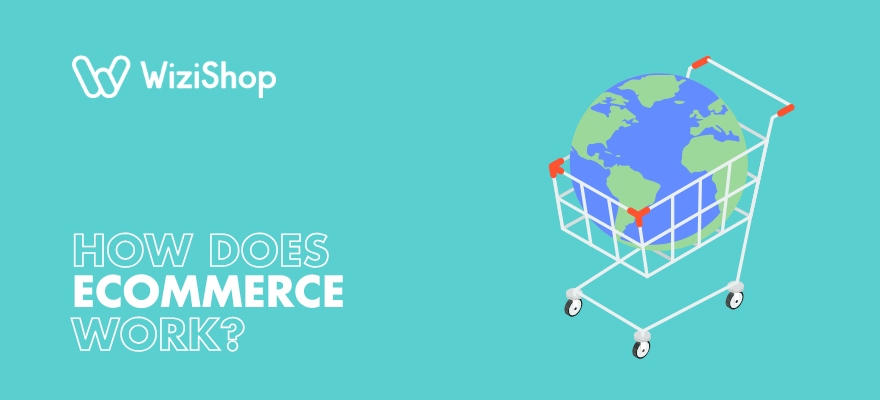Key points in this article:
- An online purchase triggers a chain of invisible actions: from arrival on the site to delivery.
- Master the behind-the-scenes: acquisition (SEO, social networks, ads) + showcase (navigation, categories, files) to prepare for conversion.
- Trust starts with performance and compliance: fast site, CDN, cookies with GDPR consent.
- Product pages decide everything: clear title, concrete benefits, visuals/videos, proof of trust and well-placed call-of-action buttons.
- From shopping cart to after-sales service, stay simple and secure: real-time inventory, delivery/payment options, 3D Secure, clear summary, package tracking, and responsive after-sales service.
Want to understand what goes on behind the scenes and how ecommerce works? You've come to the right place!
Behind a seemingly innocuous purchase, there is a store opening, doors lifting, and actions unfolding in a matter of milliseconds.
Your future digital commerce customer only sees a page loading, but you need to master everything that happens behind the scenes: acquisition (SEO, social media, ads), the storefront (navigation, categories, product pages), and then the decisive moments (adding to cart, payment, delivery, after-sales service).
In this article, we’ll walk you through the entire online shopping journey, from the first point of contact to the delivery of the package, with concrete examples to help you visualize the process and tips for how businesses can optimize each step.
Together, we’ll see how to transform a simple visit into a smooth and, above all, profitable experience, with the right guidelines to take action today.
Sit back and relax: we’ll enter the store, see how it loads, guide the customer to the right product page, secure the payment, and then take care of delivery and after-sales service.
By the end, you’ll know exactly how the big wheels of online sales turn!
Table of contents
- Step 1: Entering the store
- Step 2: Site navigation
- Step 3: Arrival on the product page
- Step 4: Adding to the cart
- Step 5: Arrival at the checkout
- Step 6: Choice of shipping method
- Step 7: Choice of payment method
- Step 8: Summary display
- Step 9: Payment process
- Step 10: Order confirmation
- Step 11: Triggering the logistics process
- Step 12: Delivery tracking
- Step 13: After-sales service
Step 1: Entering the store
The starting point of the customer journey
When a user arrives on an ecommerce site, they enter a virtual shop just as if they were entering a physical shop.
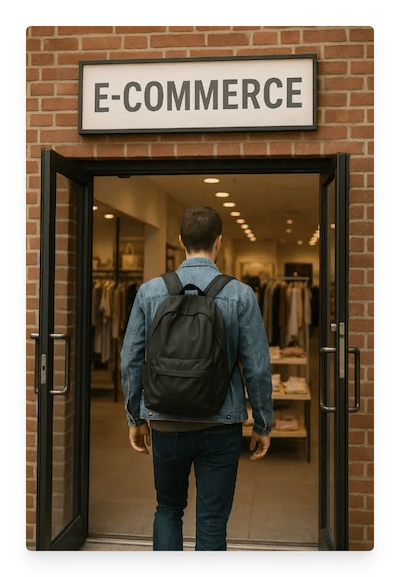
But unlike a shopping street where you come across a storefront by chance, entering an ecommerce website is almost always the result of an online touchpoint, a place that connects your site to the customer.
The main points of contact in ecommerce:
- Social media: Instagram, TikTok, Facebook, and YouTube are becoming eye-catching storefronts. A post, story, or viral video acts as an advertising billboard that links directly to your store via a real viral post, a live stream, a post suggestion, or with the help of internet users who share your business’s posts in private messages.
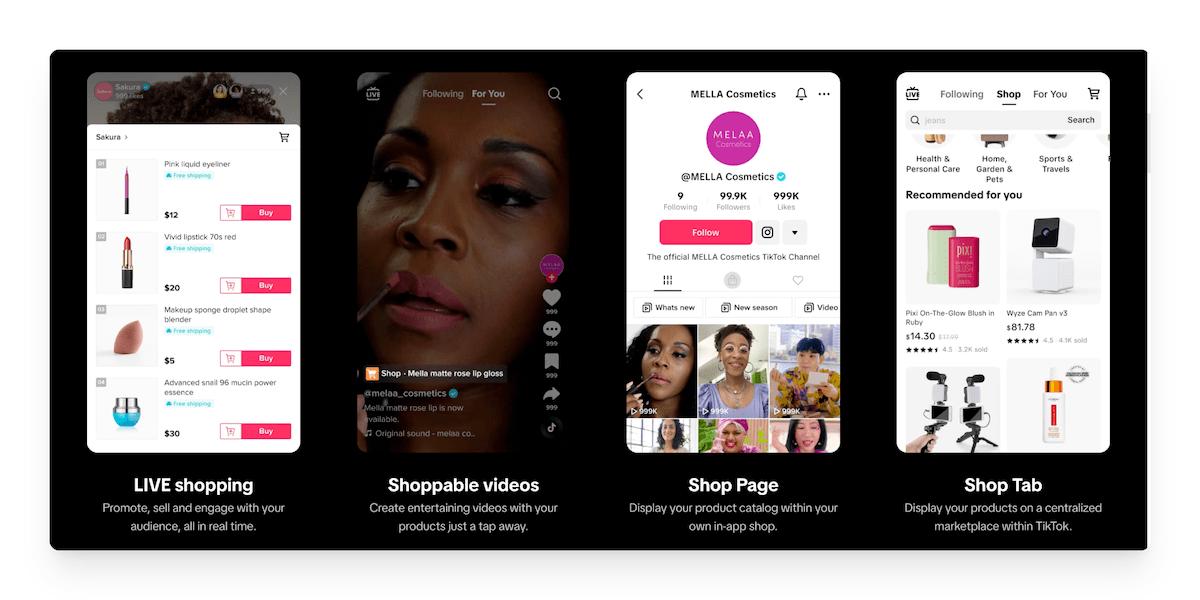
- SEO (search engine optimization): A prospect types a query into Google, and thanks to the keyword work carried out on the brand’s website, technical optimization, and content, your shop appears among the top results, providing the potential to reach more consumers. It’s a bit like having your shop in the Times Square of the digital world!
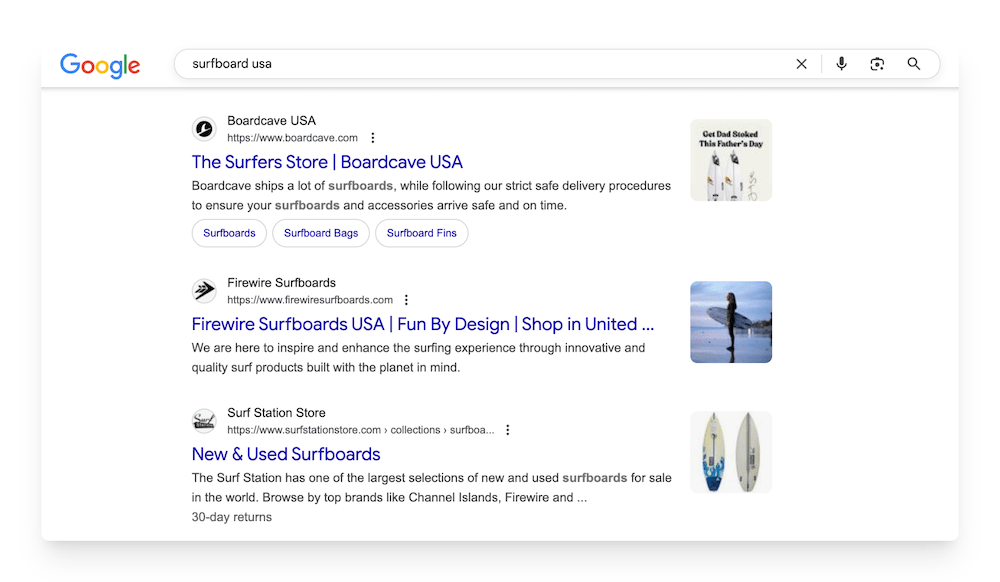
- Online advertising (Google Ads, Meta Ads, TikTok Ads, etc.): You pay to put your brand in front of the ideal consumer. A targeted ad has them land on the product page or homepage. In this case, companies pay to appear at the right time, in front of the right person, and will guide them directly to a specific page.

At this stage, from the user’s point of view, everything is simple: they click and the page opens. But in the background, there is much more going on.
Site loading: the invisible mechanics
For the user, the process is simple: one click, and the site page opens. But behind this simple action, a more complex mechanism is set in motion.
The customer’s browser sends a request to the server hosting the site, which in turn returns all the elements needed to display the page: text, images, interactive scripts.
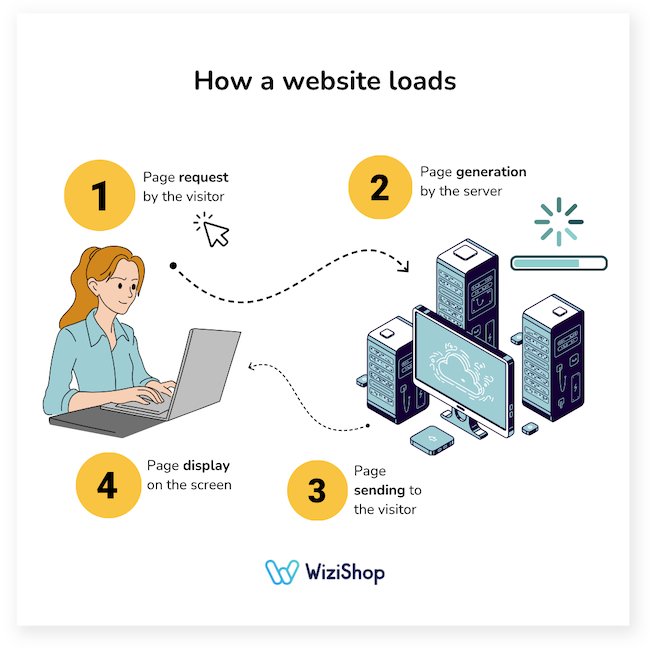
Obviously, there are many parameters to consider, and all these parameters are like a LEGO set: everything must fit together perfectly.
To ensure a fast and frictionless experience, a network of servers can intervene: it stores copies of the site around the world and delivers the version closest to the visitor geographically, thus reducing waiting time. This is called the CDN, the content delivery network.
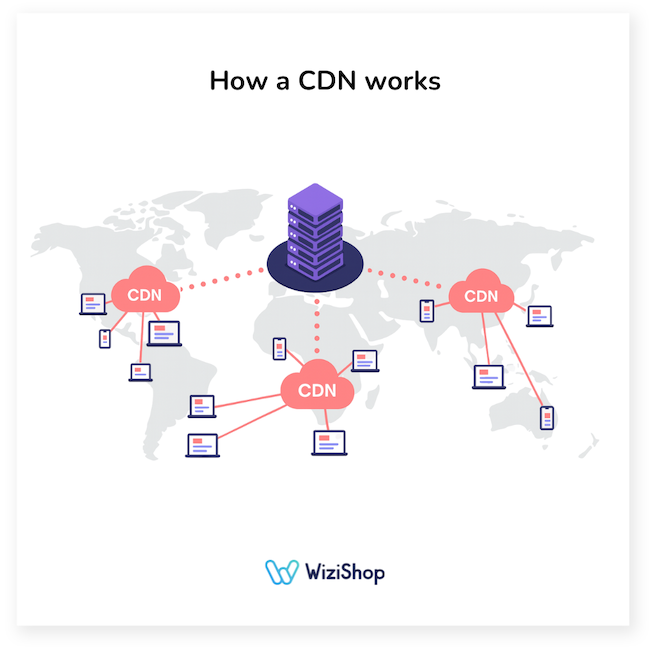
Also, from the first visit, small files called cookies are installed in the browser.
If you’re wondering, these are what allow you to remember a journey, save a shopping cart even without an account, or display personalized recommendations upon a subsequent visit!
Since 2018 and the strengthening of online privacy regulations (the famous GDPR in the European Union, for instance), it has been mandatory to request user consent for the use of cookies on a website.
This is why a pop-up is systematically displayed on websites that use cookies, like this one on the Cabaia website.

Step 2: Site navigation
Once visitors are “in the store,” they need to be able to find their way around easily!
The site should be designed like a well-organized store.
If the user knows exactly what they’re looking for, they’ll use the internal search engine.
By typing “women’s trail running shoes” on the Decathlon website, you can see that the products are displayed as suggestions to guide the user in a matter of seconds.
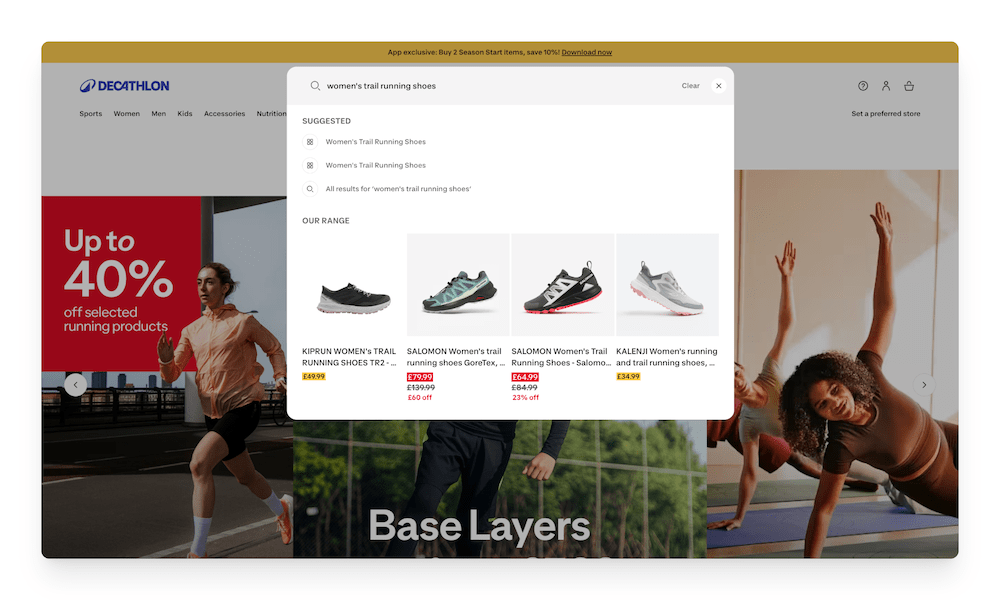
If they’re browsing out of curiosity, they’ll be guided by the categories and subcategories, which act as virtual shelves. These categories must be logical, intuitive, and organized; otherwise, they risk losing the customer in a daunting maze.
On the Decathlon website, the menu is very well thought out, particularly by sporting activity.
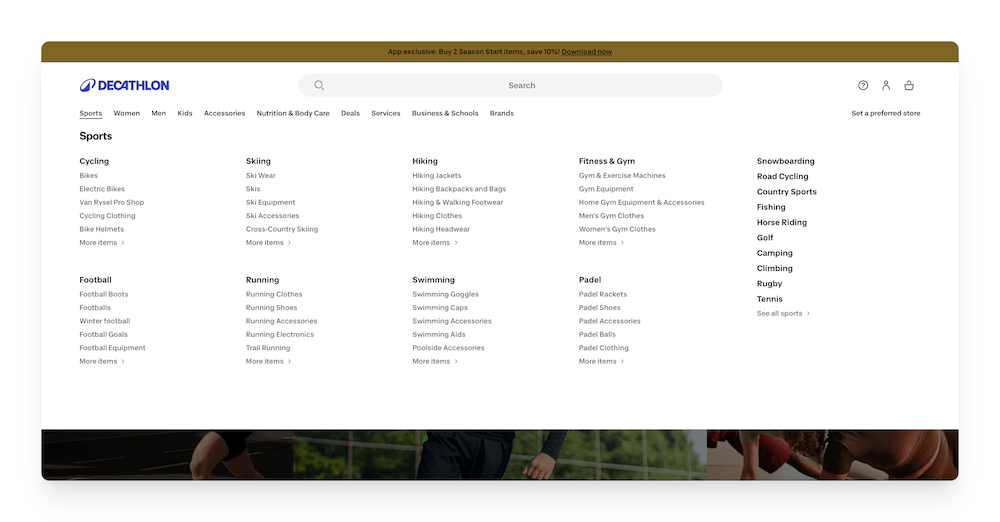
Filters, meanwhile, refine your selection: sorting by price, size, color, new releases, etc.
It’s a bit like asking questions of a salesperson in a store, except the interface provides immediate answers. Decathlon has really gone to great lengths to filter its XXL catalog as much as possible and with as much information as possible.
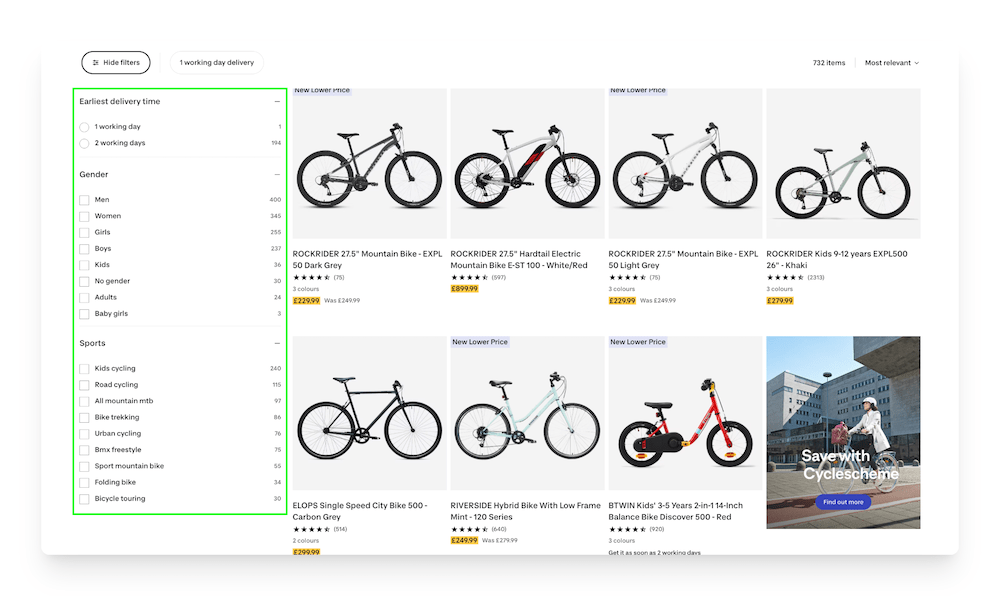
→ Read also: Our article on the top ecommerce sites
Step 3: Arrival on the product page
Now comes the key step in any online shopping journey: arrival on the product page. This is the moment when the user’s purchasing decision is made.
This is not just a simple presentation page, but the true heart of your online store. Its mission is threefold: to inform, reassure, and convince.
In other words, it gives visitors all the information they need to move from interest to action without hesitation.
Title
A good title is never left to chance!
Think of it as a sign in a physical store: if it’s vague or misleading, the customer will move on. An effective title includes the name of the item for sale, sometimes its main features (size, color, use), and subtly incorporates the keywords your prospects are searching for.
The title allows an item to provide as much information as possible to interested users, but also to reference the item on search engines such as Google.
Even in an internal search engine, it’s important to be able to add as much information as possible so that the item stands out in search results.
Another example from Decathlon: thanks to the title, you can directly access the most important basic information.
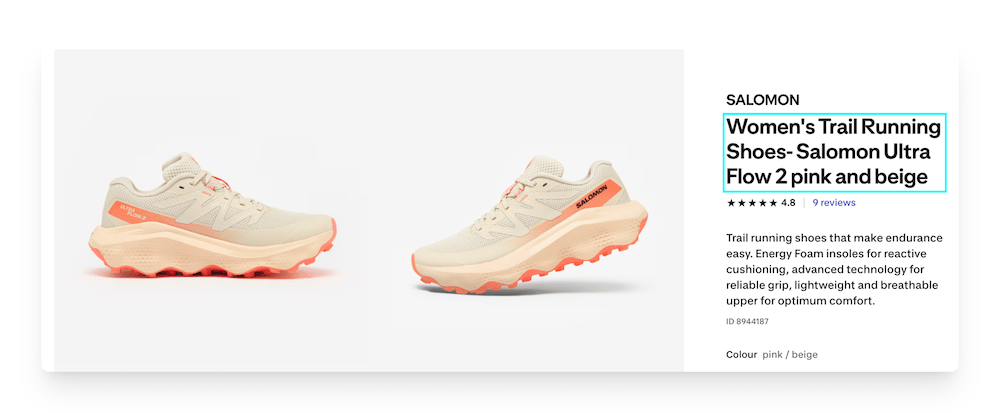
Description
The text accompanying the product you’re selling describes the item, but more than that, it tells a story and highlights what the user will actually gain by purchasing it.
Too many businesses’ product descriptions fall into the trap of providing raw technical details that don’t give enough information or only appeal to experts. However, what convinces a buyer is being able to imagine themselves using the product.
In the Decathlon example, the description clearly outlines the main features of the item in a short but well-written text.
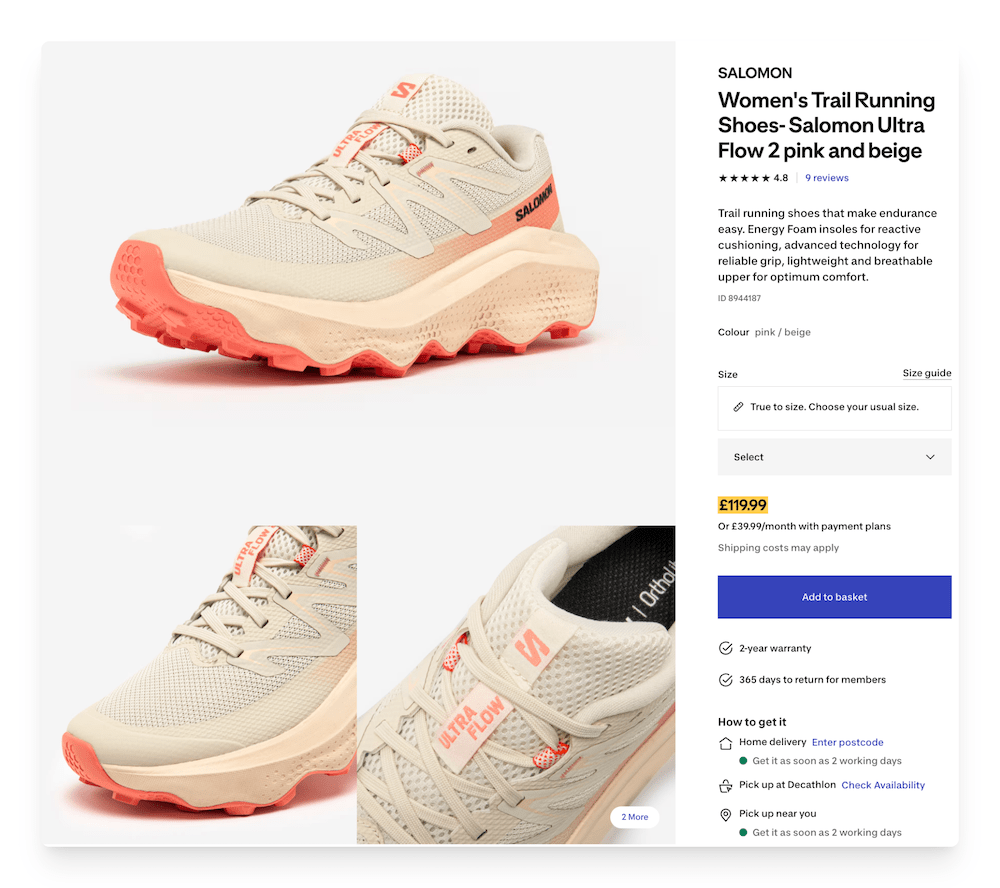
In the case of this product page, other similar products are also offered to the user to facilitate navigation and help the visitor make their choice easily because if these products are here, it’s because they necessarily have similar characteristics!
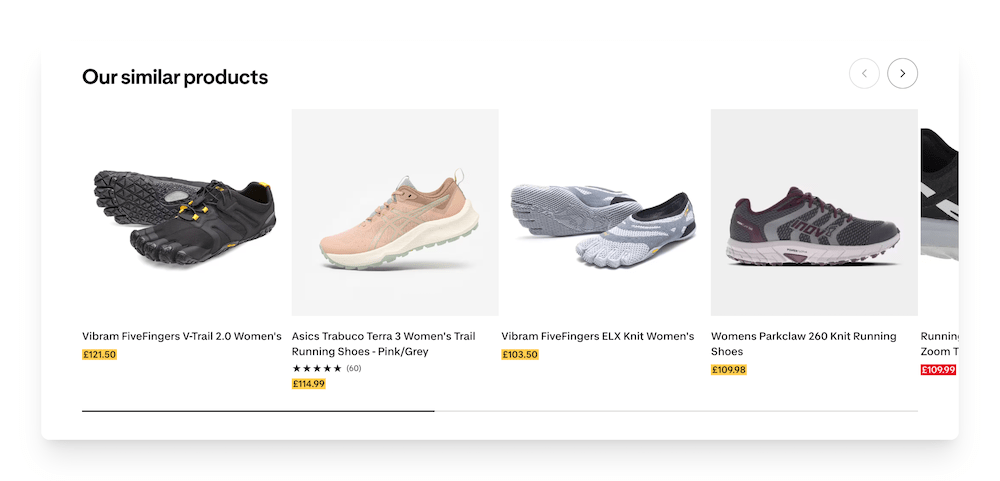
In addition, when you click on “Features” just under the item’s photos, pictograms visually provide product details to help the buyer make a faster decision.
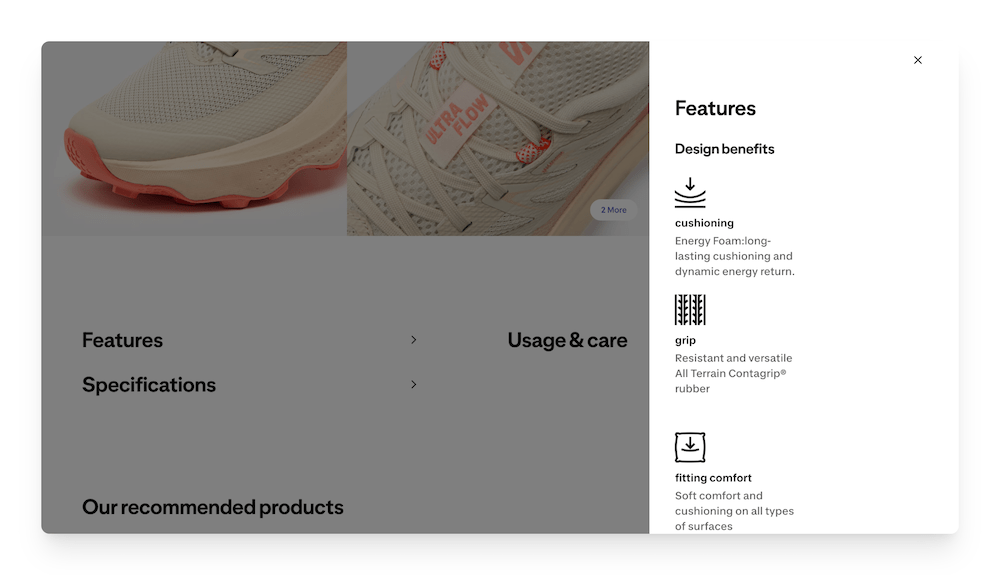
Visuals
It’s often said that a picture is worth a thousand words. In ecommerce, this is even more true. Clear, well-lit, high-definition photos inspire confidence.
But take it to the next level: offer multiple angles, detailed zooms to appreciate the material, a video showing the item in action, or even a 360° view for total immersion.
The more the shopper feels they can virtually “touch” the product, the quicker their purchasing decision will be.
Tip: Consider creating videos of the products you sell for a 360° view, but also to add information. You can use tools such as Fliz to create product videos in seconds!
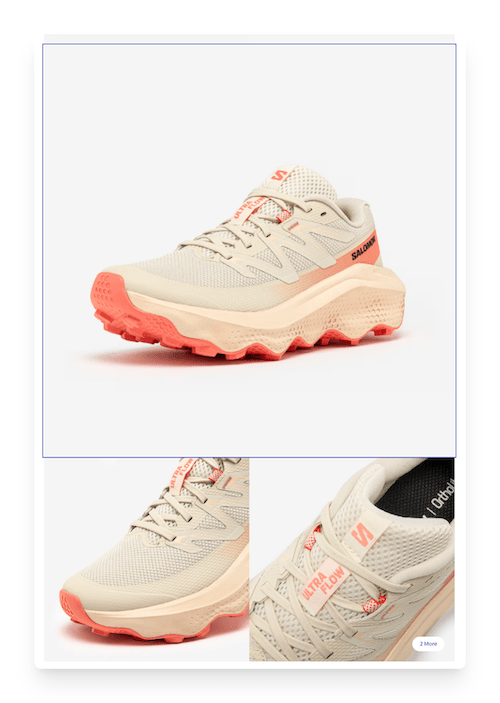
Call-to-action button
Your “Add to cart” button is not a minor detail: it’s the gateway to conversion. It must be immediately noticeable, with a contrasting color and a strategic location.
The micro-texts around it (e.g., “Shipped within 24 hours” or “Free returns”) can reinforce the feeling of security and remove any remaining hesitation.
Trust signals
The product page is both the medium for all the information related to the item being presented and the place where customers will seal their decision to buy the digital commerce product.
So you understand that in order to get them to place their final order, users must be completely reassured in order to convert.
That’s why your business’s product pages must be comprehensive, highlight all the advantages of buying on the platform, and provide customers with as much purchasing assistance as possible.
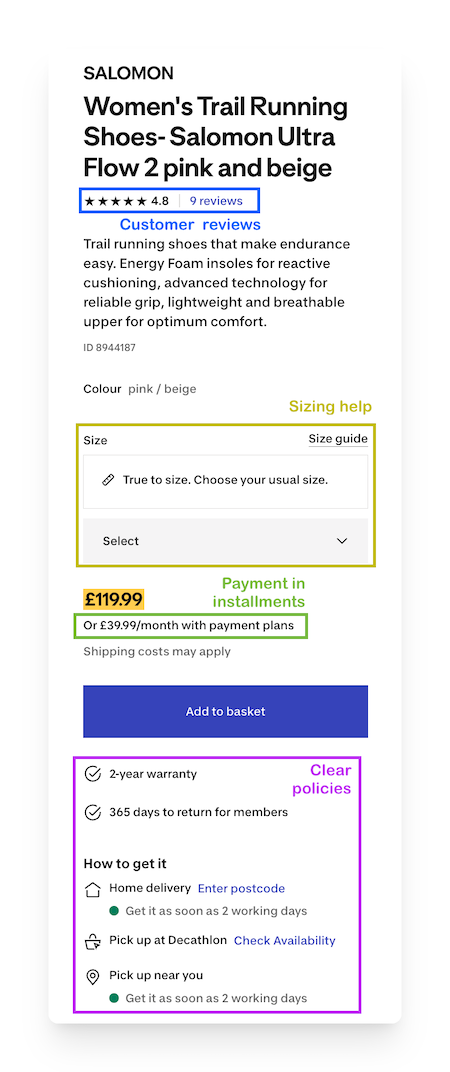
Step 4: Adding to the cart
This is the pivotal moment in a shopper’s journey: they’ve spotted a product, read the description, scrutinized the photos, and finally clicked on the “Add to cart” or “Add to basket” button.
For them, this action is simple and immediate: the item appears in their virtual cart or basket, a small counter updates at the top of the page, perhaps accompanied by a small animation. However, behind this click lies a whole series of technical mechanisms.
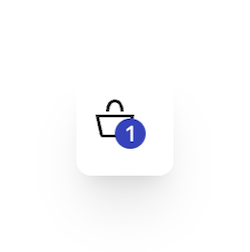
User session: A unique cart for each customer
The first thing that happens is that the user session is updated.
The site associates the selected item with the visitor’s profile, whether they’re logged into their account or simply visiting as a guest.
This session is like a temporary folder: it keeps track of the items added, the number of items chosen, and even browsing preferences.
This means that if the user leaves the page, navigates elsewhere, or returns a few hours later, they’ll find their products carefully saved. This technical detail is a powerful tool for keeping customers loyal over time, without necessarily forcing them to log in to benefit from the best online customer service.
The first step is to identify the customer. There are two possible scenarios:
- The shopper already has an account. In this case, they simply enter their email address and password. The system automatically retrieves their contact details and purchase history.
- The shopper doesn’t have an account. The site can then offer them the option to register or purchase as a guest. More and more businesses are favoring this second option, as forcing users to create an account is one of the main causes of abandonment.
Behind the screen, the user database is consulted. If the customer is recognized, their information is pre-filled. Otherwise, a new profile is generated or a “guest” session is created.
When I log into my Chewy account, for instance, I have access to my purchase history, my favorite items, and all my information.
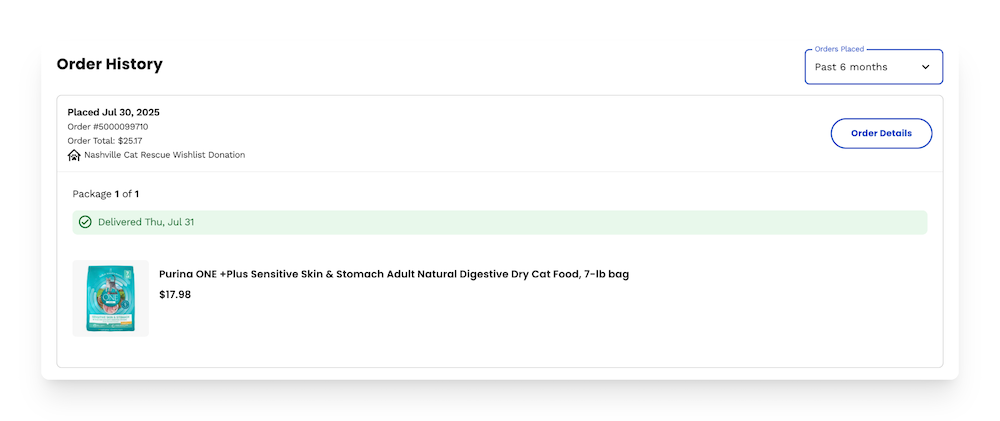
On the other hand, if the user browses in “guest” mode, a unique identifier is assigned to them thanks to cookies: their shopping cart remains saved, even if they leave the site and return later.
Even without being logged in, when I return to the Chewy website, I can see that the system has saved my shopping cart.
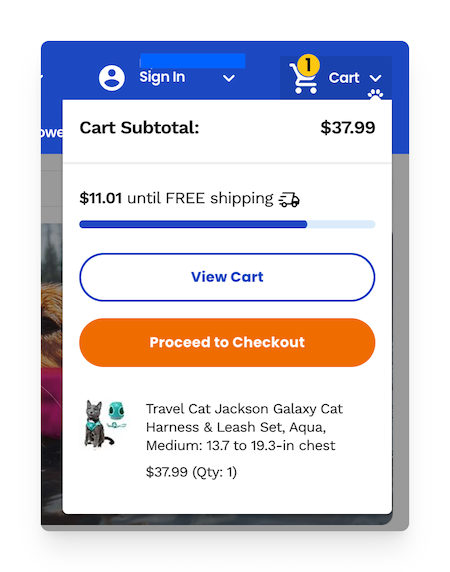
Stock verification
In some cases, as soon as the item is added to the cart, the site performs a background check to ensure that the item is still available.
This prevents promising goods, a pair of shoes in size 42, for instance, if the stock is already sold out. Depending on the web commerce platform, this check can be instantaneous or occur later, during the final confirmation of the order.
If I take the example of the pair of Salomon trail shoes on the Decathlon website, we can see that when choosing the size, the site highlights the number of products remaining in stock depending on whether the shopper opts for home delivery or wants to pick up at a nearby pickup point and leaves the words “Out of stock” if the size is no longer available.
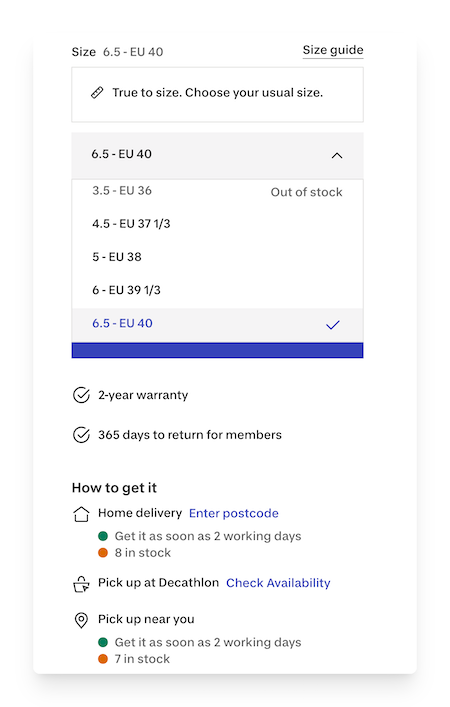
Visual updates
In terms of user experience, adding goods to the cart must be clear and reassuring. Customers want to see that their action has been taken into account.
That’s why most websites display an animation: a small shopping cart that fills up, a side window that opens, or a confirmation message. This visual detail, almost insignificant, reduces frustration and encourages customers to continue browsing.
There are various approaches to this type of pop-up that may inspire you. For instance, when you add an item to your cart on the Decathlon site, the entire cart opens and you are even offered suggestions to perfect your look!
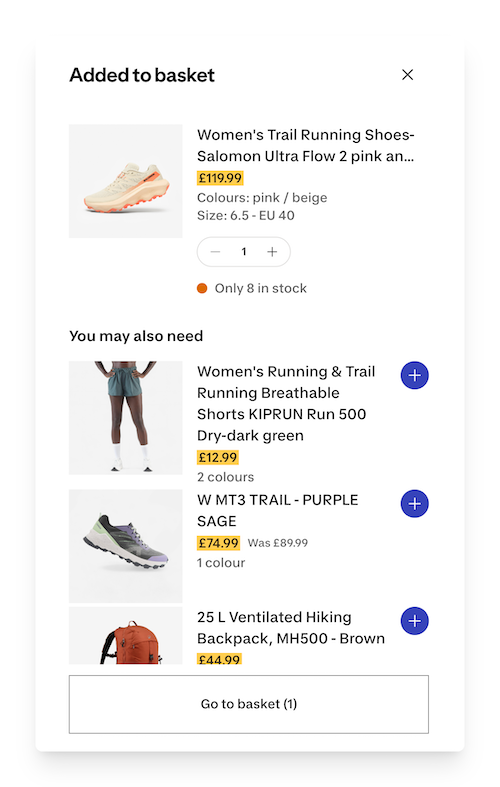
Other digital commerce companies opt for a simple “Item added” banner that appears on the screen once a visitor adds something to their cart.
A dynamic and flexible shopping cart
Unlike a traditional supermarket cart (heavy, often with a rusty fourth wheel, and possessed by the devil), the online shopping cart is the very definition of practical and enjoyable.
You can view all your choices whenever you want, adjust your products as you wish, put them aside...
In short, users are never locked into their choices: they remain free to adjust them as they browse, effortlessly and with just a few clicks.
Specifically, they can do the following:
- change the quantities for an item to try out different combinations or tailor their order to their actual needs;
- remove an item that is no longer needed or was chosen by mistake, without any hassle or wasted time;
- save a selection for later, allowing them to set aside an item they’re interested in but are not ready to buy immediately; and
- continue browsing and add new goods to their cart without having to start the process over.
The role of tracking and reminders
Beyond the visible user experience, another mechanism is quietly at work in the background: tracking.
Every item added to the cart is recorded by the site via cookies, pixels, or analytical scripts. This information, which is valuable to the merchant, is not just a simple trace: it becomes a major marketing and strategic lever.
Aggregating data on items added to the shopping cart provides insight into which products generate the most purchase intent, which paths lead to abandonment, and where the friction points are. These insights are essential for optimizing the checkout funnel and adjusting ecommerce strategy.
When consumers add an item to their shopping cart, several pieces of information are stored and cross-referenced:
- session ID or customer account (if logged in);
- product details (category, price, size, color, availability);
- traffic source (advertising, Google search, social media platforms, newsletter);
- and sometimes even contextual information such as device type or approximate location.
These signals can then be used to trigger various actions:
- Email reminder: if the cart is abandoned, an automated campaign (often managed via a business’s CRM tool or integrated emailing module) will send a personalized reminder, sometimes accompanied by a promo code to encourage the shopper to complete their order.

Source: Really Good Emails
Retargeting ads: Thanks to the Facebook pixel or Google Ads, the user will see the item left in their cart reappear in the form of a targeted advertisement. This is a very effective strategy for reviving interest and transforming hesitation into a purchase during the prospect's natural browsing, as seen here on the Côté Maison website and the Leroy Merlin advertisement.
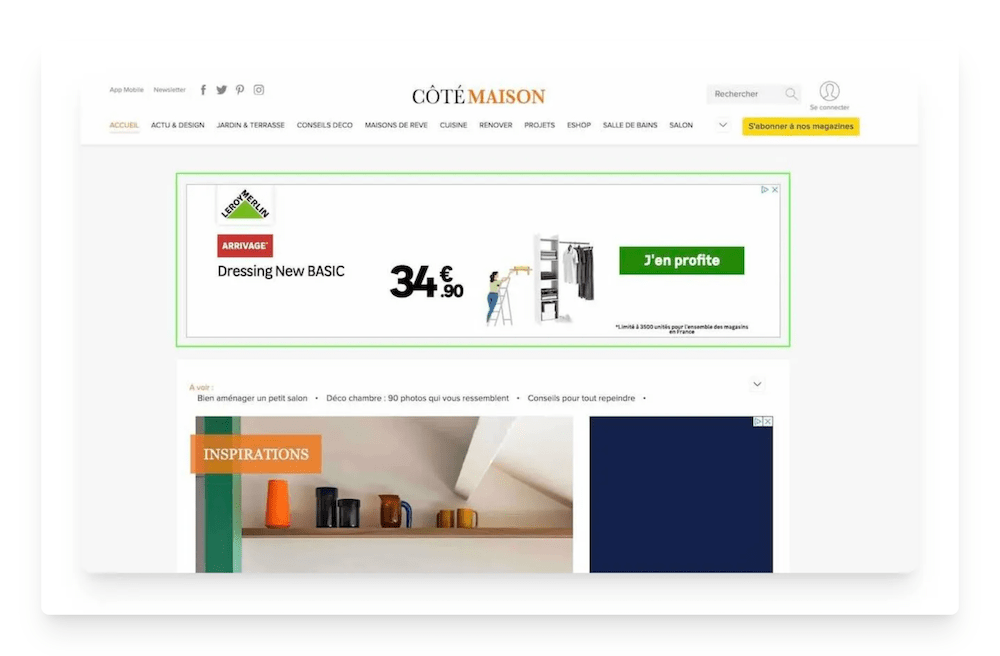
Now that you know what happens behind the scenes on an ecommerce site up until the stage of adding the product to the cart, let’s see what happens next.
Step 5: Arrival at checkout
Checkout: This is the entire path taken by the product, from the add-to-cart button to the final validation of the order.
Before we examine all the key steps, here’s a look at the reasons for shopping cart abandonment in 2025, according to Baymard Institute. Spoiler alert: many shopping carts are abandoned due to poorly optimized steps in the checkout process.
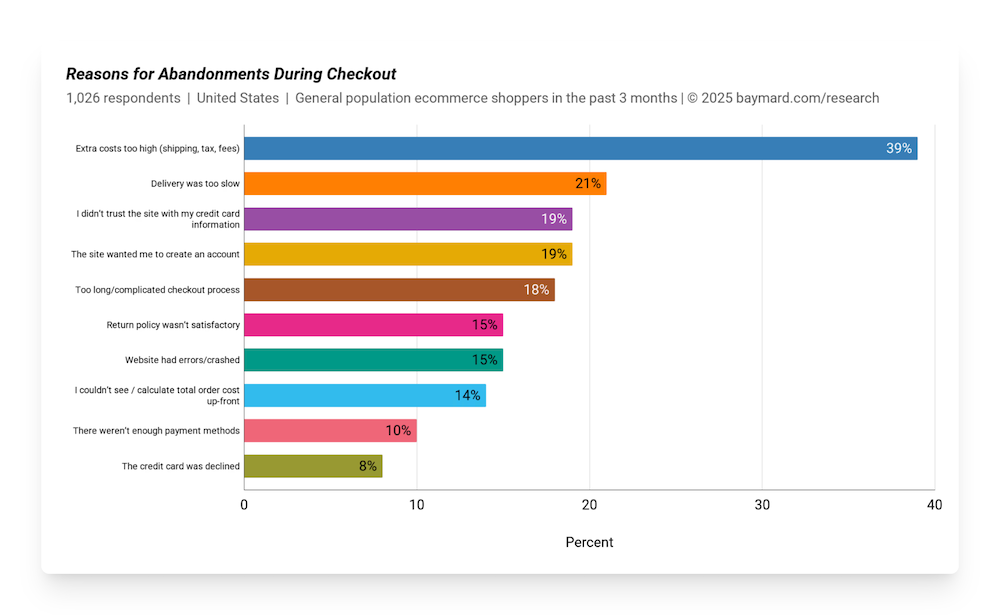
Source: Baymard Institute
Step 6: Choice of shipping method
Once the shopping cart has been confirmed, the shopper must choose how they want to receive their package. This is a key step, as the delivery method can tip the balance between “Finalize order” and “Abandon order.”
The options vary depending on the store:
- standard home delivery;
- express delivery, which is faster but more expensive;
- pickup at a drop-off point or in-store, which is convenient and flexible; and
- sometimes specific options such as eco-friendly delivery or a chosen time slot.
On Sephora’s mobile site, for example, all options are offered as soon as the basket is confirmed, remembering the shopper’s latest preferences and, above all, clearly stating the prices and exact delivery dates.
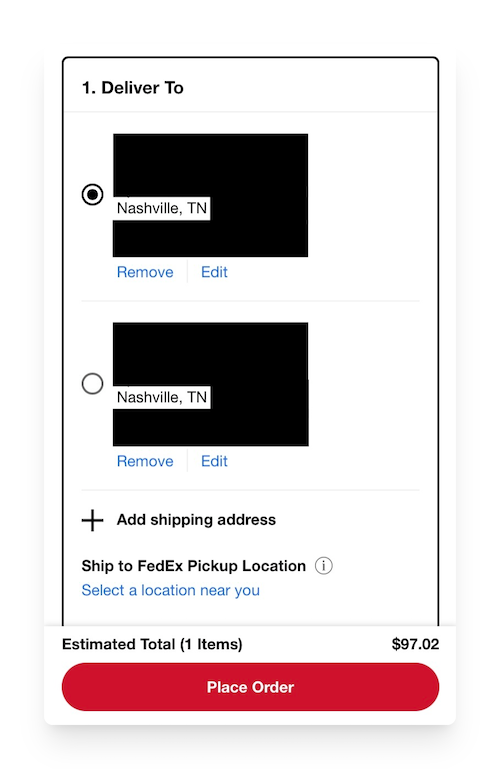
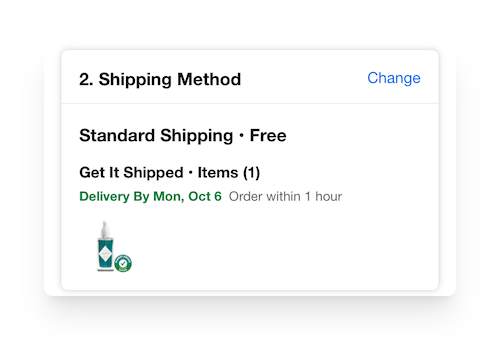
In the background, the site connects to carrier systems (Colissimo, Mondial Relay, DHL, UPS, etc.) via modules or APIs. This allows real-time display of rates, delivery times, and availability of options.
The internet commerce shopper must enter their full address, sometimes with details such as the building floor or access code.
Technically, this step allows the site to do the following:
- calculate shipping costs based on location,
- determine which carriers are available for that area, and
- verify that the order can be delivered (some geographic areas may be excluded).
In terms of user experience, the fields must be clear and easy to fill in. Some websites incorporate auto-complete systems: as soon as the customer types a few letters, the address is suggested via a database (such as Google Maps), which is much more convenient, especially on mobile devices!
Step 7: Choice of payment method
This is the decisive step: the buyer must now pay for their order. The more varied and reassuring the types of ways to pay are, the higher the chances of conversion.
The most common methods are:
- credit card (Visa, Mastercard, American Express);
- PayPal, which offers a fast and secure means to pay without having to enter bank details;
- Apple Pay, Google Pay, or other one-click digital wallets; and
- sometimes installment payments (with or without fees), such as Klarna, Alma, or even PayPal.
Here’s how it all looks when making a mobile purchase on the Sephora website:
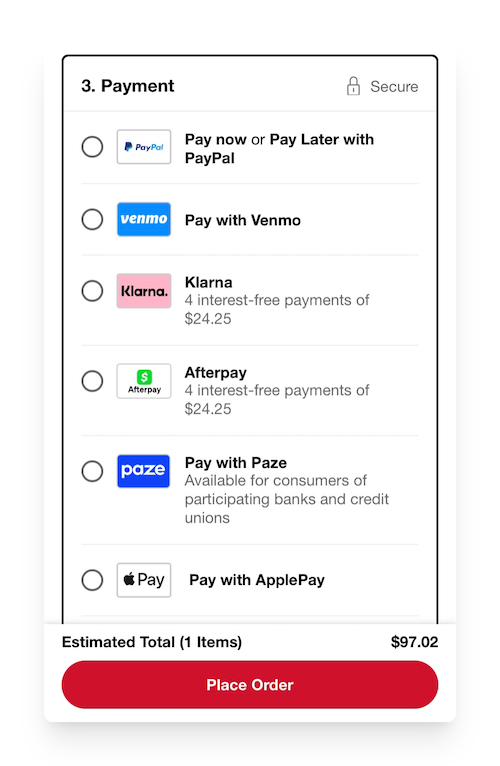
Behind the scenes, when the shopper enters their banking information or selects how they wish to pay, the site communicates with a payment gateway (Stripe, PayPlug, Adyen, or any other method chosen by the merchant). This acts as a secure intermediary between the ecommerce site and the shopper’s bank.
Step 8: Summary display
Before clicking on the final button, the customer needs one last confirmation. The order summary presents all the details in a clear and transparent manner:
- the list of products with their quantities and prices,
- the selected shipping costs,
- any discounts or promo codes applied, and
- the total amount including tax to be paid.
This is when the shopper can still change certain details (quantity, address, delivery method). Once everything has been checked, they click on the confirmation button.
If the checkout takes place on a single page, all the summary information will be displayed as the customer fills out their details.
Other ecommerce businesses may have a pop-up or new page appear on their site with the summary information. After the shopper confirms the order, this instructs the seller to ship their cart to the chosen address.
Step 9: Payment process
The payment stage is undoubtedly the most sensitive part of the ecommerce journey.
This is where customers entrust their most valuable information: their bank details.
For them, it must appear simple, fast, and above all, secure. But behind this seemingly innocuous gesture lies a highly complex technical ballet, designed to protect information and validate the transaction in real time.
Entering bank details
Depending on the option chosen, the consumer can do the following:
- enter their bank details (card number, expiry date, security code) into a form integrated into the website,
- or be redirected to a third-party provider such as PayPal, Apple Pay, Google Pay, or Klarna. In this case, they do not need to enter their information for each purchase: they simply log into their third-party account to confirm the payment.
From the user’s point of view, these two processes seem very different, but in both cases, the ecommerce site does not store the banking information.
This information is immediately transmitted via secure channels to a specialized provider.
Data security
Whenever you see the little padlock in your browser bar (the famous HTTPS), it’s a sign that the connection is encrypted. This means that the information sent between the browser and the server is encrypted, making it unreadable to a potential hacker.
This information is usually found in the menu next to the website URL.
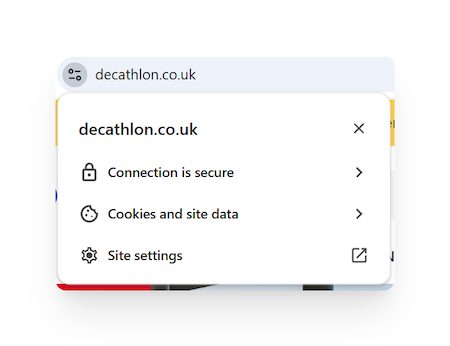
In addition to this standard encryption, other measures enhance security:
- PCI DSS protocol, an international standard required for websites that handle banking information.
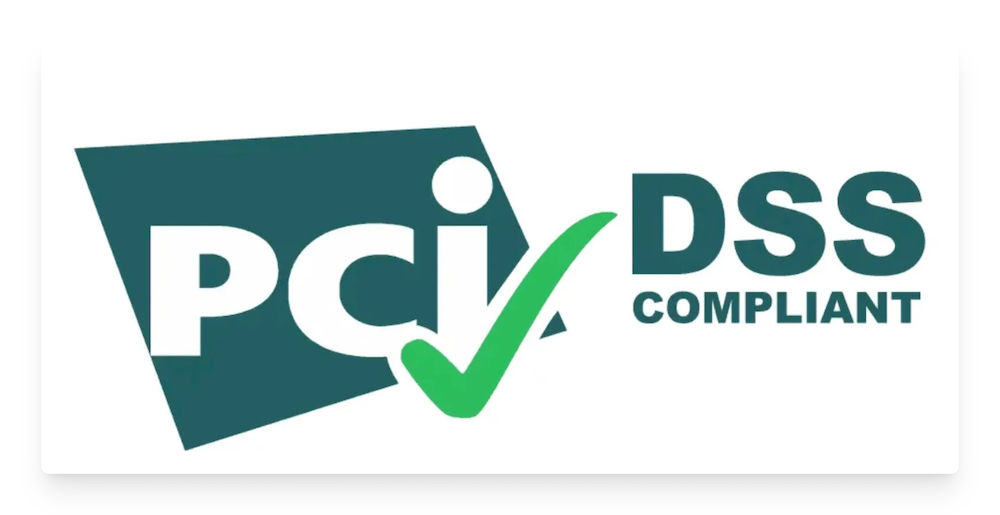
- 3D Secure, an additional verification system, linked to the user’s bank account: after entering their card, the consumer receives a text or a notification to confirm that they are the cardholder and must enter their secret identifier or let the FaceID of their device recognize their face to finalize the purchase.
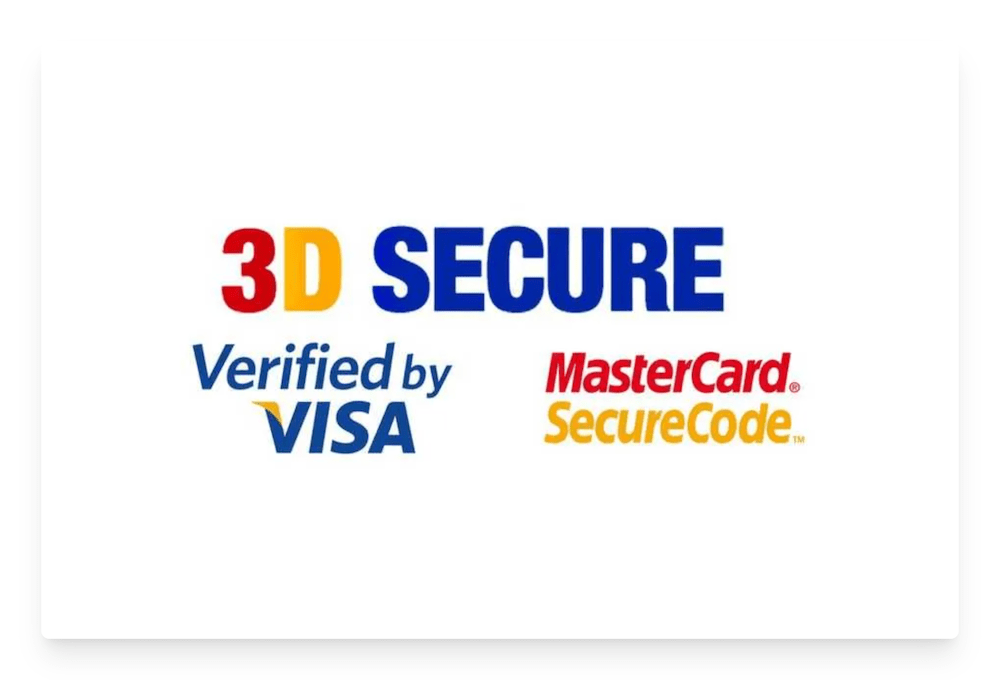
- Some banking solutions allow you to generate temporary credit cards for online purchases, as is the case with Sumeria.
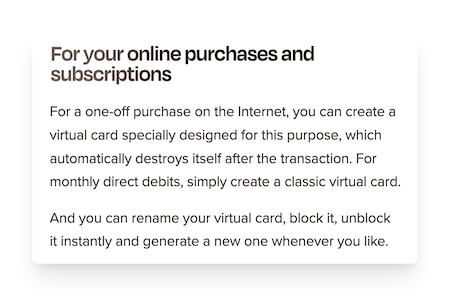
Calling the payment gateway
Once the information is entered and secured, the website forwards the request to a payment gateway such as Stripe, PayPlug, Adyen, or Mollie.
This service provider acts as an intermediary: it checks the validity of the data, communicates with the customer's bank, and returns the response to the merchant website.
It’s a bit like a translator and messenger: the gateway receives the website’s request, forwards it to the card-issuing bank, and then returns with a green light or a decline. All this takes place in just a few seconds!
Authorization or refusal by the bank
The shopper’s bank then analyzes the digital commerce transaction:
- Is there sufficient balance?
- Is the card still valid?
- Does the transaction appear suspicious (e.g., an unusual amount or a purchase from a different country)?
If everything is in order, the bank sends an authorization: the funds are blocked in the customer’s account pending the actual withdrawal.
However, if a problem arises (insufficient funds, expired card, suspected fraud), the transaction is declined and the consumer receives an error message inviting them to try another payment method.
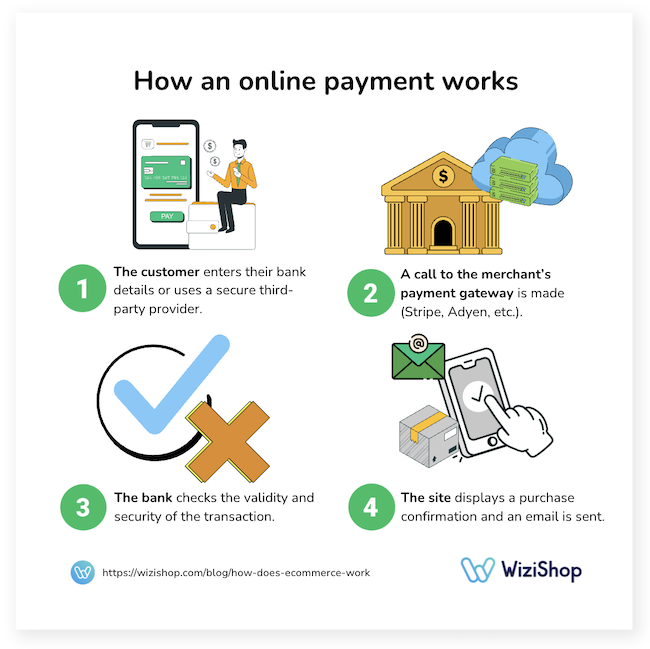
Immediate confirmation on the customer side
When the bank gives its approval, the gateway instantly sends the response back to the ecommerce site.
The customer sees a confirmation page on the screen: “Your payment has been accepted,” “Thank you for your order,” sometimes accompanied by a tracking number or a visual summary.
This immediate feedback is essential: it reassures the buyer and prevents them from having doubts. No one likes to wonder if their payment has “really gone through.”
In the background, the site permanently records the order in its database. The user simply sees a reassuring message: “Your order has been successfully placed” or “Thank you for your order, we will ship it as soon as possible!”
Step 10: Order confirmation
Once the payment has been validated, the customer feels relieved: their order has been registered!
But for the seller, this is when the real work will start.
In the background, the site triggers a series of automatic actions that transform a simple click into a real order, ready to be prepared and shipped.
Generating an order form and sending an email
As soon as payment is confirmed, the system automatically generates an order form. This document contains all the details: the customer’s contact information, the items ordered, the quantities, the total price, and the chosen delivery method.
At the same time, a confirmation email is sent to the buyer. This message plays a key role: it reassures the buyer by confirming that their order has been registered and will be processed.
This email often includes an order number, a summary of the items, and sometimes a link to track the progress of the shipment, as shown here in this email confirming a Bath and Body Works order.
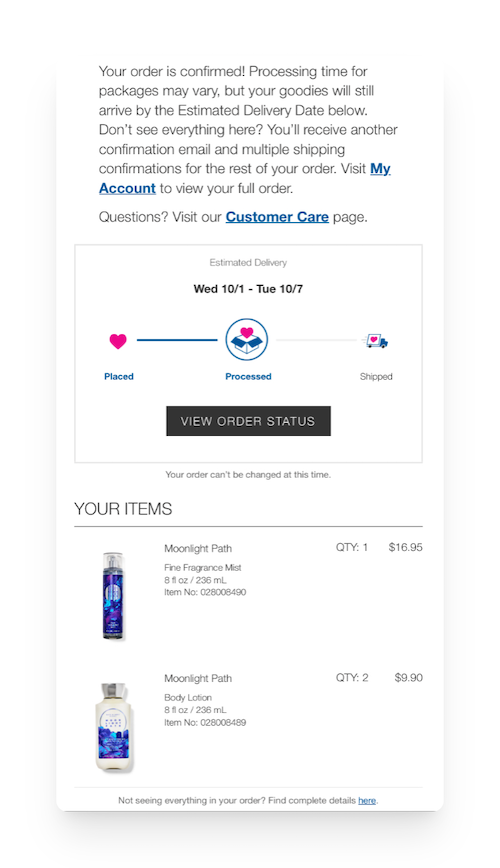
Inventory update
Orders directly impact inventory management. Each item ordered is deducted from the available inventory, whether for an online shop or in the case where the inventory is also linked to a physical store. This also works thanks to automated software!
→ Read also: Our article on brick and mortar vs. online
This helps prevent “phantom” sales, where an item is sold even though it’s no longer in stock. Depending on the ecommerce solution used, this update can be immediate (in real time) or delayed (upon manual validation by the manager).
A good system must also handle special cases:
- If the last copy of an item has just been sold, the site should automatically indicate it as “out of stock” or offer a pre-order by registering to receive an alert, for example, as on the Decathlon site.
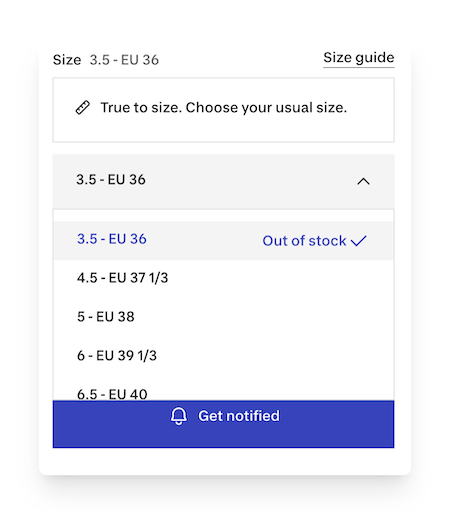
- If the stock is shared between several channels (ecommerce site, physical store, marketplace), the update should be synchronized everywhere to prevent errors.
Step 11: Triggering the logistics process
Once inventory has been calculated and optimized, the entire logistics process is set in motion. The system sends the order to the warehouse or order picker (this could be the e-merchant themselves, an internal team, or an external logistics provider known as a “3PL” such as Amazon FBA, which takes care of everything from A to Z in exchange for a commission on the sales of the products you’re selling).
In practical terms, this means that the order appears in the preparation queue: the items must be picked, packed, and labeled.
Some logistics management software (WMS for Warehouse Management System) is interconnected with the ecommerce site to automate this step and avoid any manual data entry.
Most of the time, on your ecommerce solution, everything is prepared automatically, from the order form to the invoice and the shipping label.
Back-office updates
On the seller’s side, the back office (your ecommerce dashboard) is updated in real time. The order status progresses through different stages:
- awaiting preparation
- being prepared
- shipped
This allows the merchant to easily track progress and manage priorities.
Automatic notifications
Finally, the system can send automatic notifications to various parties:
- to the logistics team or warehouse, to inform them of a new order to be prepared;
- sometimes even to external partners (suppliers, carriers); and
- to the customer, of course, to inform them that their order is being processed.
Automation is essential for saving time, limiting errors, and improving the consumer experience, ensuring customers will return more quickly thanks to all these levers.
But one important element remains: your delivery management, and especially the after-sales service.
Step 12: Delivery tracking
The order has been placed, payment confirmed, stock adjusted... but for the customer, the story isn’t over yet.
What they’re waiting for now is their product.
Delivery is often the most tangible, and sometimes the most anxiety-inducing, part of the ecommerce experience.
It’s also a decisive moment for building customer loyalty: a package received quickly and in good condition reinforces trust, while a delay or logistical problem can leave a lasting bad impression.
Integrating carriers and generating tracking numbers
Once the order is ready, the e-merchant must choose a carrier for shipping: USPS/Colissimo, FedEx, UPS, DHL, GLS, etc.
Each carrier has its own rates, delivery times, and delivery methods (home delivery, pickup point, express, etc.).
Most ecommerce sites are now directly integrated with carriers’ systems through modules or APIs. This allows for the automation of several actions:
- printing the shipping label with the customer’s contact information,
- registering the order in the carrier’s system, and
- generating a unique tracking number associated with the package.
In your WiziShop back office, it’s very easy to access all the information related to your orders currently being processed as well as your order history.
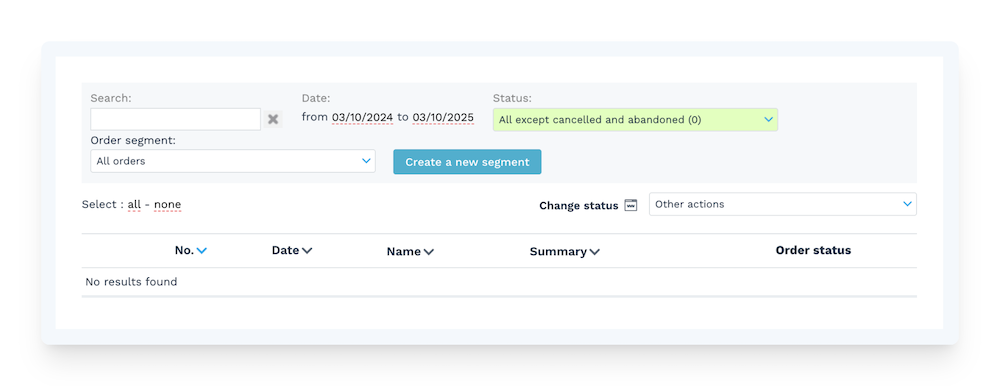
This tracking number is then automatically sent to the shopper by email or displayed in their personal account on the website. It becomes the link between the online purchase and the physical reality of the package in transit.
Online tracking for the customer
For the buyer, receiving a shipping confirmation email with a tracking number is reassuring. It means that their order is no longer just a promise: it exists, it has been prepared, and it is on its way to them.
Thanks to this number, customers can track the progress of their package in real time:
- package picked up by the carrier,
- in transit,
- arrived at the sorting center,
- being delivered, and
- delivered.
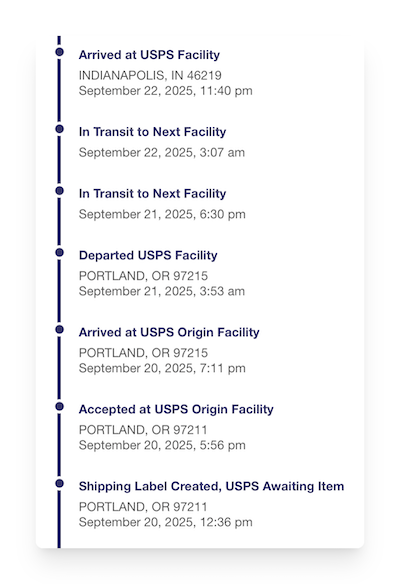
Some websites go even further by offering integrated tracking in the customer area, without having to go through the carrier's website.
Delivery strategies
Delivery is not just a logistical step: it’s also a marketing and loyalty tool.
Fast, punctual, and well-packaged delivery can turn a first purchase into a lasting relationship with a satisfied shopper. Conversely, a delay, a damaged package, or unclear tracking can discourage a buyer from returning.
Many e-retailers now offer options to meet consumer expectations:
- free shipping above a certain amount,
- choice of delivery time slot,
- express delivery (sometimes within 24 hours), and
- gift or personalized packaging.
Step 13: After-sales service
Even though everything goes smoothly in most cases, unforeseen events can occur: lost, damaged, or delayed packages, or defective products. This is where customer service comes in.
Effective customer service should be the following:
- accessible (via chat, email, phone, or even social media);
- responsive (a response within 24 hours has become the norm); and
- solution-oriented (refund, exchange, voucher, new shipment).
In the background, customer service is often linked to the website’s back office, which allows you to quickly find the order, delivery status, and customer history.
For maximum efficiency, you can use live chat and automate the most basic responses, and even set up a messaging system where you can take over in case of more complex questions, as is the case here with the Farmacy Beauty chatbot.
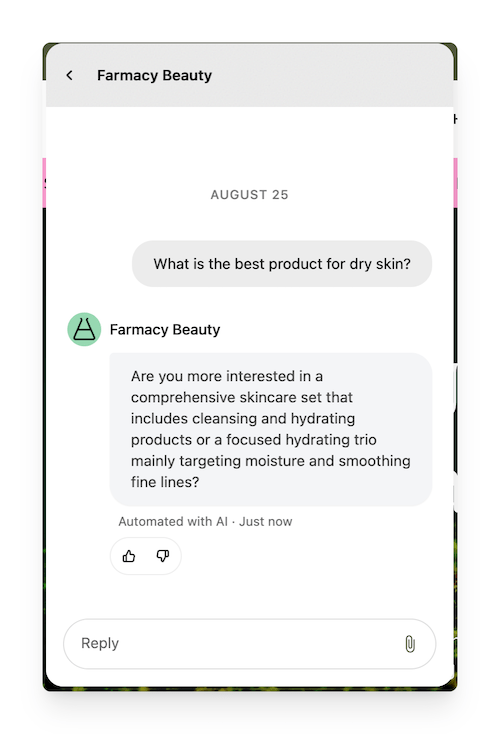
In any case, the law requires that your contact details be accessible on your digital commerce website: turn them into an asset by displaying them in the header and/or footer!
If we take a step back, delivery and after-sales service are not secondary steps: they’re an integral part of the online shopping experience for consumers. They are the last impression left on the customer, and therefore often the most memorable.
These services are not only practical: they also contribute to the perceived value of the brand. And who knows, maybe thanks to this logistical point, the shopper will recommend you to their friends and family, helping you reach more consumers and leave a more than positive review of your brand, as on Herbivore Botanical’s Trustpilot page?
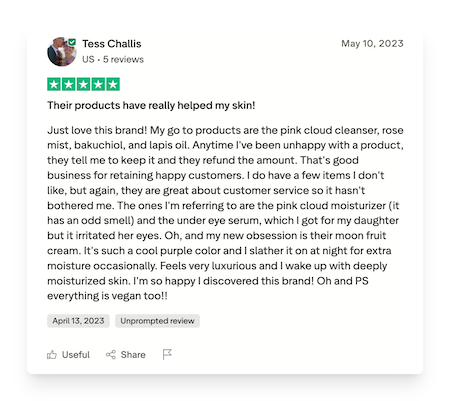
A web commerce customer who is satisfied with their delivery, who was able to track their package with complete transparency, and who found effective customer service when they needed it, is much more likely to return to make another purchase.
Conversely, a negative experience at this stage can undo all the efforts made upstream (SEO, website design, smooth checkout process, etc.).
Behind every online purchase lies a mechanism that is much more complex than it appears.
For the internet commerce customer, everything seems simple: they discover a product, add it to their cart, pay for their order, and wait for their package.
But in reality, each click triggers a series of invisible processes and scenarios, ranging from the hosting server to payment gateways, logistics, and customer service.
As the owner of an ecommerce business, understanding what goes on behind the scenes is essential. Not only does it allow you to anticipate the technical needs of your store, but also to optimize each step to provide your customers with a seamless experience.
Believe me: many people start an ecommerce business without being aware of all these steps and underestimate the mechanics involved. Every cog must be in place and well-oiled: now you know!


